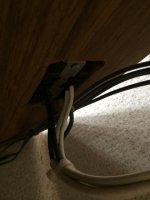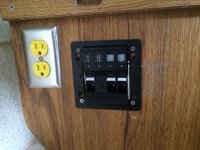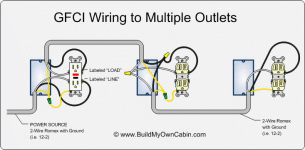so I cut in the breaker box blue sea 120volt main with 2 15 a rocker.
I have red the instructions ( it was a few weeks ago and at work right now). but even when I read it wasn't really making all that sense to me. I am not the best when it comes to electrical. and have not really ever dealt with home electrical especially.
what I am wanting to do is this.
the boat came wired with two outlets and it looks like power comes into first plug and then back out and onto plug number 2 behind helm seat. when this was put in they just hard wired it. my hope it "cut" this box in before the first outlet and run both of them off one 15 amp breaker. leaving the second one open for me to add my battery charger later this summer once I decide how I want to do so.
I was kind of hoping if someone could help me out with this.. hopefully someone who has installed one or someone with a better understanding of electrical.
this is the backside of the existing electrical switch

new box next to it

new breaker and old outlet (I am replacing outlets also when I rewire..

I have red the instructions ( it was a few weeks ago and at work right now). but even when I read it wasn't really making all that sense to me. I am not the best when it comes to electrical. and have not really ever dealt with home electrical especially.
what I am wanting to do is this.
the boat came wired with two outlets and it looks like power comes into first plug and then back out and onto plug number 2 behind helm seat. when this was put in they just hard wired it. my hope it "cut" this box in before the first outlet and run both of them off one 15 amp breaker. leaving the second one open for me to add my battery charger later this summer once I decide how I want to do so.
I was kind of hoping if someone could help me out with this.. hopefully someone who has installed one or someone with a better understanding of electrical.
this is the backside of the existing electrical switch

new box next to it

new breaker and old outlet (I am replacing outlets also when I rewire..


